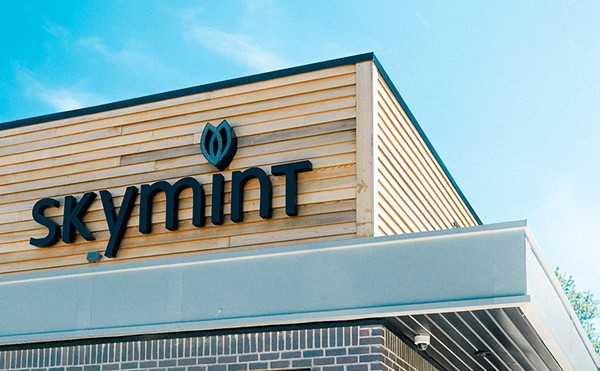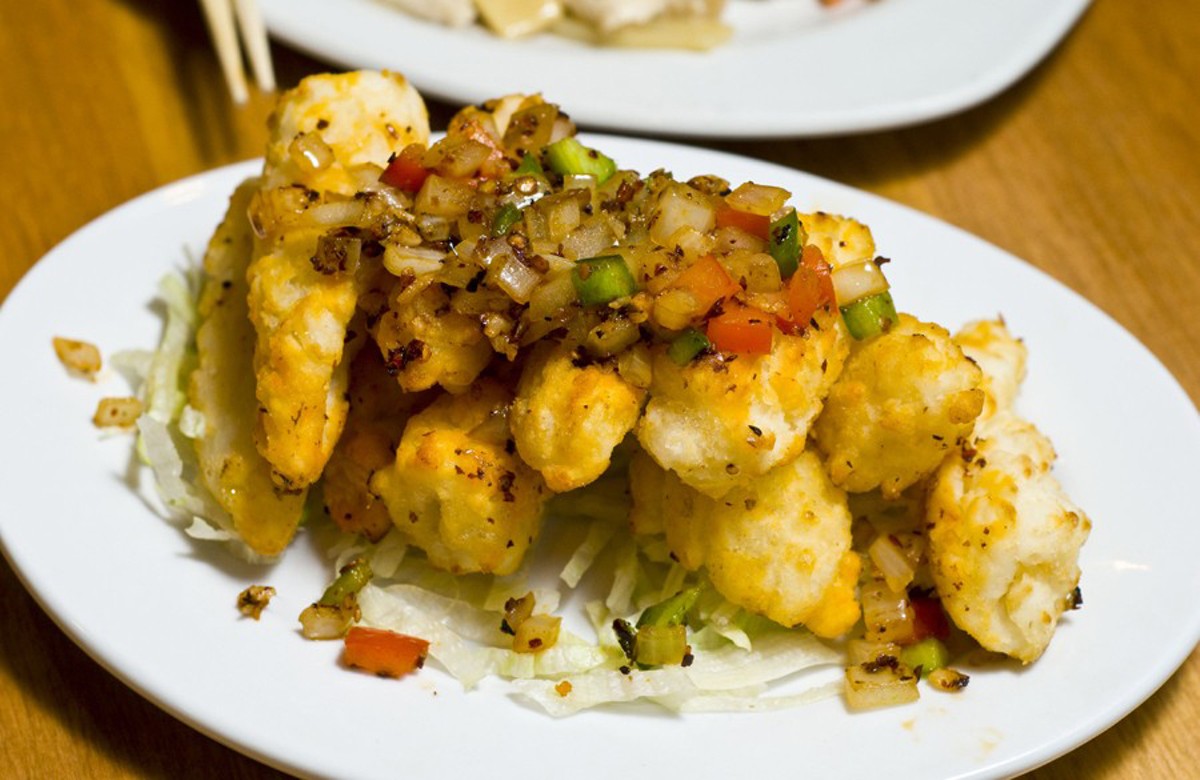
4710 Cass Ave., Detroit; 313-974-7669; midtownshangri-la.com
This Midtown establishment has a lively bar scene, partly thanks to its location on the campus of Wayne State University, and partly due to mind-bending concoctions such as Whisky Business, made with Jameson, apricot brandy, honey, and lemon. Between the two, it stays busy from lunchtime to closing time. The always hospitable staff is almost certain to have whatever Chinese fare it is you’re searching for. One menu is of the Cantonese-American classics we all know, from almond boneless chicken to General Tso’s everything. They also serve some very good sushi, which, these days, is almost as familiar as ABC. But the more venturesome fare appears on the dim sum menu, with such choices as deep-fried squid with spicy salt or steamed chicken feet. “Try a really small, tiny bite. Even just a small bite is pretty good,” Raymond Wong, who still patrols the small eatery a few days a week, suggests. “Try everything. If you don’t like it, it’s not your fault. But if you never tried it, and you don’t realize you like it, whose fault is that?” —Michael Jackman
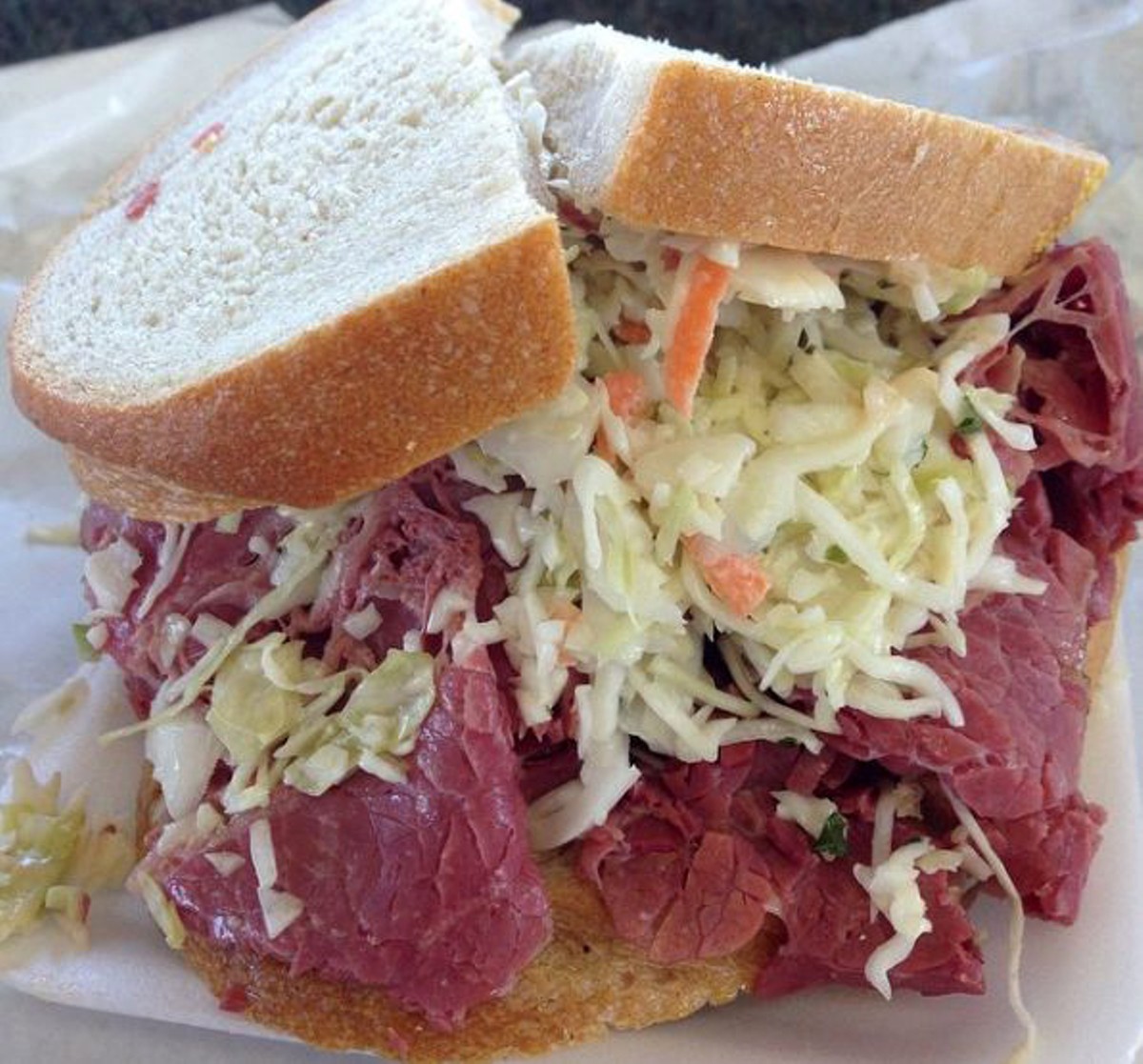
Various locations; breadbasketdeli.com
Owner Al Winkler tells us that when he opened his first Jewish deli during the mid-1960s, corned beef houses like his were nearly as common in Detroit as the coney island. As the Jewish population in the city migrated to the burbs, the deli landscape changed, and while there are far fewer delis than there used to be, a strong corned beef culture remains in place. Each week, Bread Basket rolls through more than 24,000 pounds of corned beef, which Winkler tells us is the most of any restaurant in the nation. But not all his corned beef ends up in sandwiches. There’s also the corned beef roll, which is what it sounds like — a deep-fried, egg roll wrapper vessel holding a small pile of razor-thin, salted, and cured beef. The snack is on the cusp of becoming a regional dish like Detroit-style pizza, or the coney dog, and Bread Basket Deli is a great place to get acquainted with one. —Tom Perkins

22200 Fenkell Ave., Detroit; 313-533-0950; scottysfishandchips.com
There are some people who go to Scotty’s for the fish, the hand-sliced potatoes and onions, and hand-shredded cabbage for the coleslaw. Sure, they enjoy the tartar sauce and a ketchup-enriched shrimp sauce made by hand. But a lot of them go for the memories. You see, Scotty’s is located in Detroit’s Brightmoor neighborhood, which was once thickly planted with Southern-born auto workers, nowadays a poster child for disinvestment and decay. But Scotty’s remains stubbornly implanted on Fenkell, impervious to change, looking very much like a 1960s diner. Oh, there are touches that scream “family-owned business,” such as the motley collection of about 200 lighthouses kept on display, or the back room with its taxidermied fish, and portraits of roiling, dark seas or of upright and erect clipper ships. Meals come complete with a “joke of the day,” usually a giggle-inducing shaggy-dog story. A warning before you set out for the land of lighthouses: Scotty’s is closed Sundays and Mondays and only accepts cash. —Michael Jackman

1400 Michigan Ave., Detroit; 313-962-5500; ottavavia.com
Think of just how much Corktown has changed since Slows Bar-B-Q opened a what feels like a century ago in 2005: Just 15 years ago, the main culinary destination on Michigan was White Castle, and any drinking done al fresco was coming out of a paper bag. Early on in the transformation of this section of Michigan Avenue, this Corktown bank was remade into a richly appointed Italian eatery in 2013. The interior is all dark wood and chic lighting fixtures, and the cured meats and house-made cheeses are of high quality, and aren’t limited to porchetta and mozz’. You might even find such rarities on the menu as air-dried slices of beef called bresaola, delicious with a bit of olive oil and lemon juice. Or choose from several inventive pizzas. Heck, you don’t even have to be hungry to enjoy the pleasures of Ottava Via, which include a full bar. Sneak out back to the umbrella-shaded tables, where you can enjoy sun and shade, weather permitting, while enjoying such cocktails as the Julius Julep. —Michael Jackman
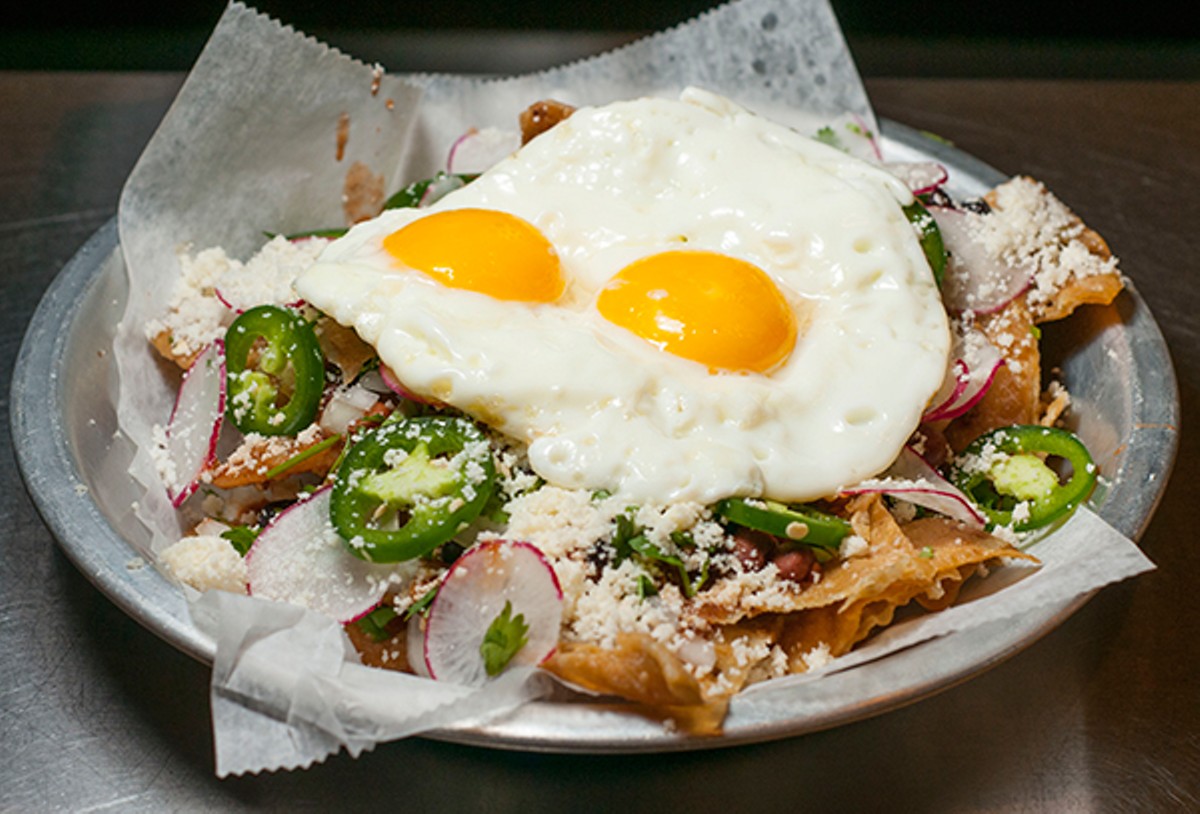
27302 Woodward Ave., Royal Oak; 248-808-6244; owlwoodward.com
The world's best food usually isn't served at 3 a.m., but we've all found ourselves hungry at that hour for one reason or another. Unfortunately, that usually means your options are limited to coney islands or fast food. But there are a few noteworthy restaurants that stay open all night, and among them is Royal Oak's O.W.L.
The small Mexican-inspired diner opened in the former Onion Roll Deli spot several years ago and quickly developed a large fanbase. You'll want to check out O.W.L's fowl play, and one of the best options is the chicken fried chicken sandwich. It's bird is brined in buttermilk and Frank's hot sauce, and encased in a crispy, greaseless thin crust. The sandwich's condiments — crunchy pickles, and a slick of mayo — balance well with the chicken. The package is tucked between crusty cemita buns, which are sesame seed rolls common in the Mexican state of Puebla. Macha wings — marinated in olive oil, ancho peppers, and garlic — are another winner. O.W.L. cooks them crisp with a complexity of flavors not typically encountered in a chicken wing.
If you crave an early or late breakfast, an excellent place to start is the chicken and gravy, which arrives under a healthy coating of poblano cheese "gravy." Add eggs to make it a breakfast dish. If you're not looking for bird, try the chilaquiles, a dish built off a double layer of house-fried tortilla chips that are wetted with tomatillo salsa, yet remain crunchy. Top them with two fried eggs, and O.W.L. jumbles in fresh chopped cilantro, red onion, crunchy jalapenos, and thin-sliced radish before crowning the mound with a dusting of salty Mexican cotija cheese.
Another solid option is the spicy chorizo sandwich, which arrives with two cemita rolls holding a puck-sized chorizo patty that's blanketed with white, mild Chihuahua cheese. Adding the habanero bacon to any breakfast dish is a wise idea, and any breakfast option pairs perfectly with the cilantro-fried potatoes. —Tom Perkins

4216 Woodward Ave., Detroit; 313-265-3729; rockcityeatery.com
At this point, mac and cheese is about as ubiquitous as the burger, so it really takes something for any one restaurant’s version to stand out in your memory. Rock City’s take is one of the few that manages to do so. Theirs is a a super rich dish consisting of flavorful aged cheddar cheese sauce served over cavatappi noodles in a bowl made out of baked Parmesan. Yep.
Owner-chef Nikita Sanches tells us that when he developed the recipe, he knew overcooked noodles served in a bowl under a blanket in goopy cheese wouldn’t cut it.
His version is first different in that he essentially created a gluten-free mac and cheese by nixing the roux and figuring out a different way to stabilize the cream and cheese. Next he attempted to multiply the best part of mac and cheese — the burnt, cheesy layer on top. Sanches found his inspiration for that in a recipe for cacio e pepe, a traditional Roman pasta dish that’s served in a baked parmesan bowl.
The recipe was a hit, but customers kept wanting to add items to it. At first Sanches resisted the idea, but he finally gave in. Now you can add to your parm bowl duck, brisket, barbecue pork, fried bologna, pickled jalapeños, wild mushrooms, roasted broccoli, and different cheeses.
“People can put whatever they want in there. You can tell someone is blazed when they come in and put ten things in the bowl that are spilling out onto the plate,” Sanches laughs. “Hey, it’s their world.”
At this point, the mac and cheese is one of the dishes for which Rock City is known, but Sanches jokes that it’s a “blessing and curse.”
“People will come in for mac and cheese, just order that and not care about anything else, but the menu also has a lot of other pretty banging items. So, like I said, a blessing and a curse,” he says. —Tom Perkins
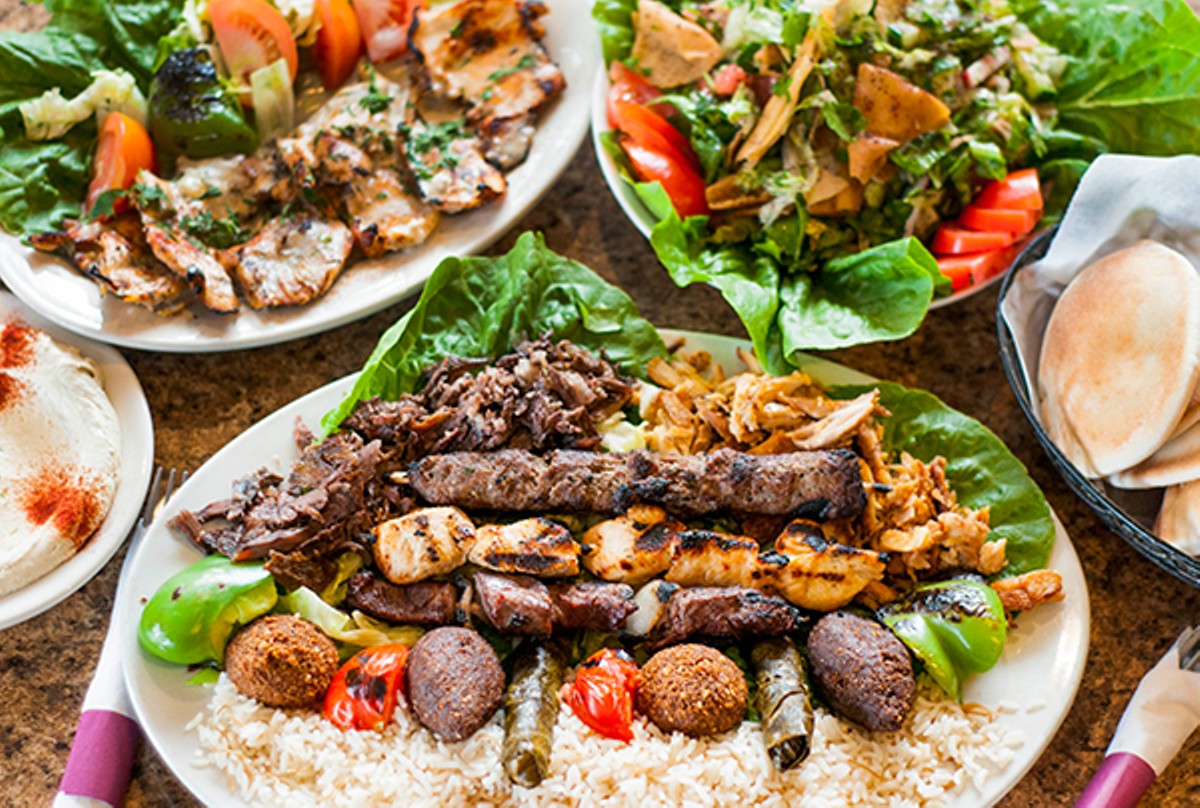
12710 W. Warren Ave., Dearborn; 313-582-8185; alameerrestaurant.com
Dearborn's Al Ameer Lebanese restaurant consistently runs at such a high level that the James Beard Foundation chose it in 2016 for its America's Classics Award, which goes to eateries that "have timeless appeal and are cherished for quality food that reflects the character of their community."
But many Metro Times readers have known about it long before the national exposure. It opened in 1989 at Warren Avenue and Miller Road just as Dearborn's Lebanese population spiked. It's best known for bright dishes like its peak fresh kibbeh; char-grilled chicken breasts with blackened edges that arrive in a small puddle of a lemony, garlicky "gravy"; and kafta packed with allspice, parsley, onion, cumin, coriander, and cinnamon.
Founders and chefs Zaki Hachem and Khalil Ammar were chefs in Lebanon before meeting in Dearborn and launching the restaurant, and the Hachem family's continuing hands-on involvement keeps the ship tight. The restaurant opened its own halal butcher shop next door some time in the early 2000s, and it can't be overstated what a difference an in-house butcher can make in terms of freshness and quality. There's also experience in the kitchen, where longtime chefs, some of whom have been with the restaurant since the beginning, man the vertical spits on which dozens of layers of beef, lamb, onion, and spices baste in the meat's own fat and juices to produce what's among the fullest, richest shawarma you'll find in Dearborn. —Tom Perkins

Various locations; buddyspizza.com
It seems that plenty of people are now aware that Detroit has its own pizza style, like the New York fold-over thin slice, or the Chicago deep dish that Pizzeria Uno popularized in the Windy City. What’s more exciting is that Detroit-style is now becoming a thing around the country. But as Buddy’s vice president Wes Pikula once said, “‘Detroit-style’ pizza is actually ‘Buddy’s-style’ pizza.’”
Indeed, Buddy’s invented the genre in 1946 at its McNichols and Conant pizzeria that once functioned as a blind pig. Other pizzerias now offer their take on the style, but the Detroit-pizza family tree sprouts out of Buddy’s Detroit kitchen.
So what is exactly is a Detroit-style — er, a Buddy’s-style — pizza? It’s marked by a blanket of semi-soft, high-fat Wisconsin brick cheese that’s spread to the pizza's browned, caramelized, cheese-crusted edges. It’s a rectangular deep dish, so there essentially is no outer “crust.” The dough is crunchy and focaccia-like, sauce always goes on top, and the pie is divided into block slices that are often heavy enough to demand utensils. Buddy’s pies are not too unlike the Sicilian deep dish, but the differences are distinct.
Above all, the dough is what sets Buddy’s apart. High hydration levels, saltwater yeast, and secrets in the proofing process are what gives its pizzas a light, crunchy interior. While there’s similarities to focaccia, Buddy’s Neapolitan deep dish foundation doesn’t include oil and isn’t as chewy.
And similar to the way that New York City’s water is what makes NY-style slices inimitable outside the Big Apple, Buddy’s original shop repurposed square, blue steel utility trays designed for storage at local auto factories into pizza pans. The pans’ folds gather and house the fat and oil from the cheese, then drip flavor into each successive pizza’s crust.
Buddy’s now operates 12 locations around southeast Michigan, and a 13th is planned for downtown Detroit. —Tom Perkins
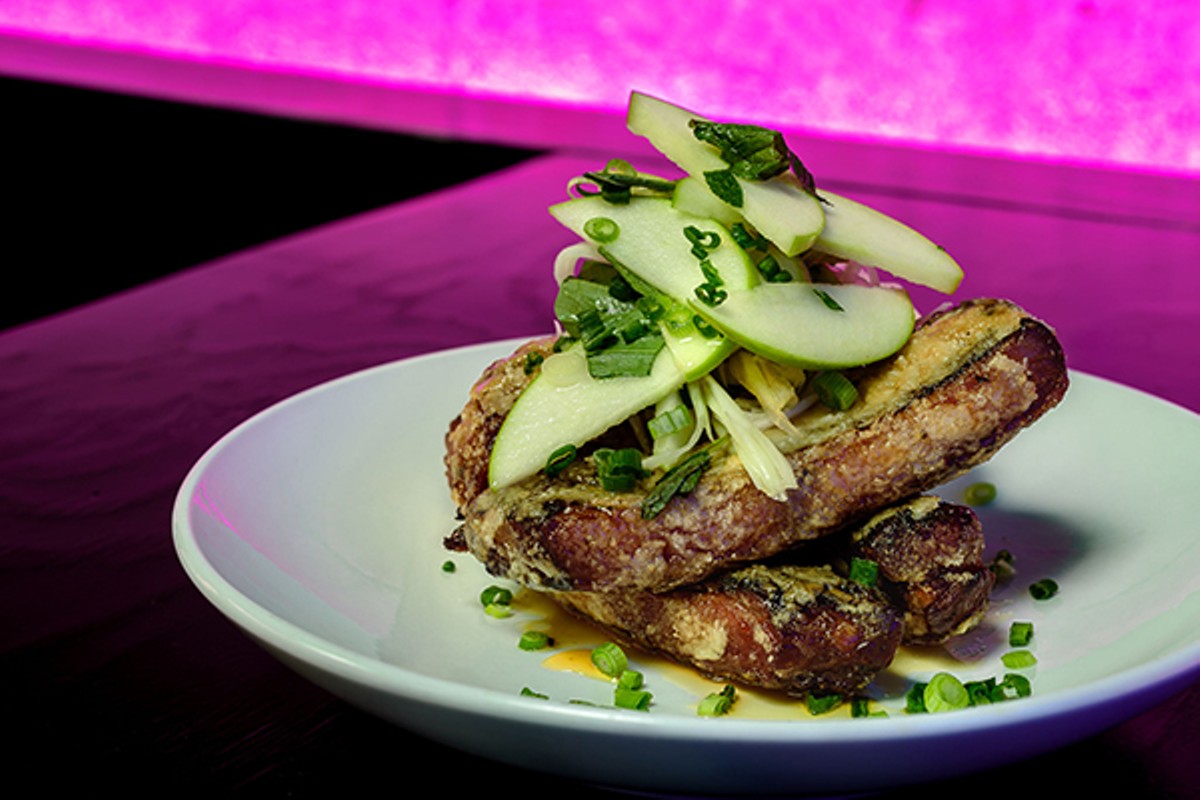
2520 Michigan Ave., Detroit; 313-855-2864; takoidetroit.com
In just four years, the hip Corktown Thai-fusion restaurant known as Takoi has had enough ups and downs to fill decades at any other eatery. Initially a food truck associated with Two James Spirits, it went brick-and-mortar across the street in 2016 and quickly won praise from local reviewers, even being nominated as a semifinalist in the Best New Restaurant category of the prestigious James Beard Awards. Then the restaurant suffered a break-in and suspected arson in February 2017, and the restaurant was so badly damaged it took six months to re-open.
But during this interval, people began to come forward to complain that the eatery's name was a slur: The term "katoi," they explained, is used as an insult for transgender people in Thailand.
In the final days before re-opening, the trio who owned the restaurant changed the name to Takoi, and took down a few other gags critics had deemed offensive. They also put up some imposing fences to keep out would-be thieves and arsonists.
But once you get past those imposing fences (and any earlier hurt feelings), you'll likely agree with our readers that Takoi is a chic, modern restaurant with a distinct atmosphere, that chef Brad Greenhill's take on Thai fusion is exciting, and that everything else is now water under the bridge. —Michael Jackman
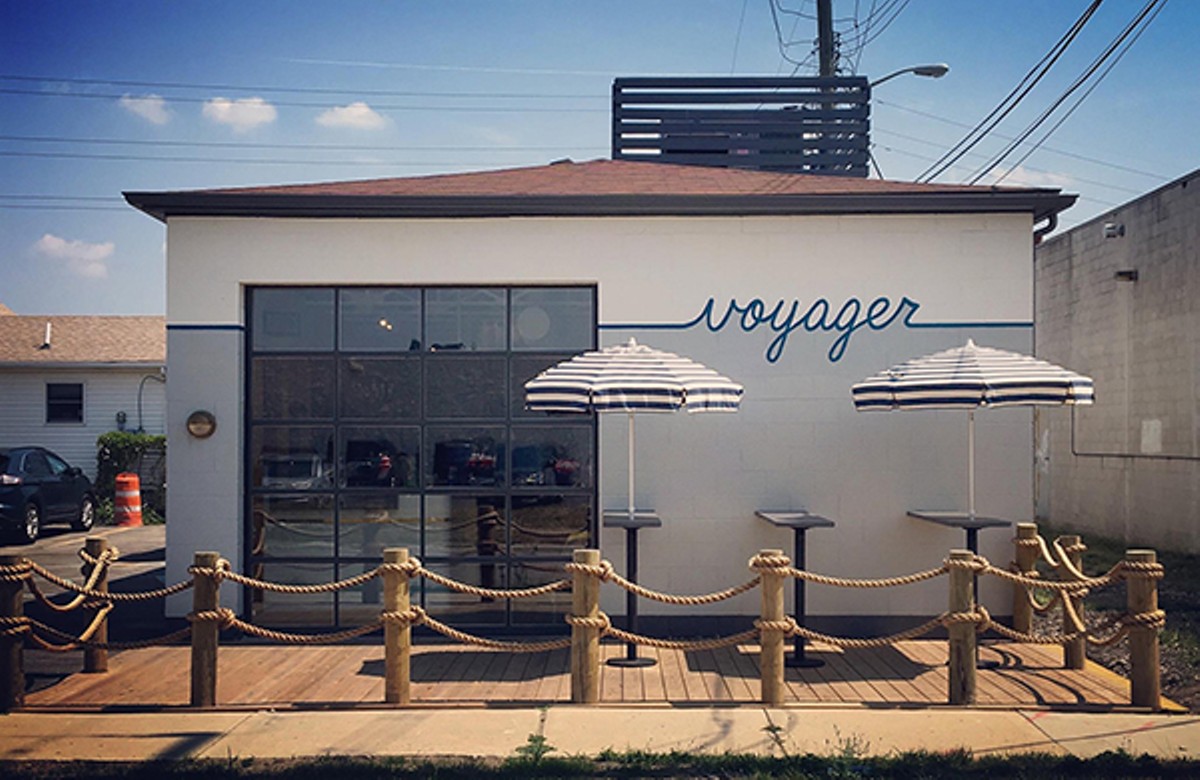
600 Vester Ave., Ferndale; 248-658-4990; voyagerferndale.com
Let’s face it — metro Detroit is not known for its oysters. Our proximity from the coasts makes importing the fresh stuff a challenge, so much so that few have dared try. Enter Voyager, the ambitious Ferndale upstart that has managed to crack the code and rise to best seafood restaurant within a year of opening (and also make some slightly more prestigious best-of lists along the way). The small restaurant relies on a combination of dry ice and overnight shipping to ensure the freshness of its product, and sources from a variety of oyster farmers who can make it happen. The smallest of its suppliers is said to pack the molluscks in an Igloo cooler, along with reused two liters filled with ice, then wrap it in duct tape and send it off for next-day delivery (at least one oyster farmer is so small-time he apparently asks for the cooler to be shipped back). The menu features a rotating selection of oysters from the East Coast, West Coast, and Gulf, which can come raw, fried, or grilled. Price points vary at the raw bar — from as low as a dollar during happy hour, all the way up to $3.25 per Olympia oyster (worth shelling out every penny). But the seafood selection extends beyond the shell fish for which it's best known. Voyager offers a range of classic and creative must-try plates, from standard-issue peel n’ eat shrimp with Old Bay, to crab chili spaghetti and hake tikka, a white fish with an Indian twist. Though MT readers voted Voyager best seafood, it could also be a contender for “best ambiance” — the vibe in the 30-something-seat garage-turned-eatery is charming and intimate, though not invasive, and its lighting is just right. —Violet Ikonomova





